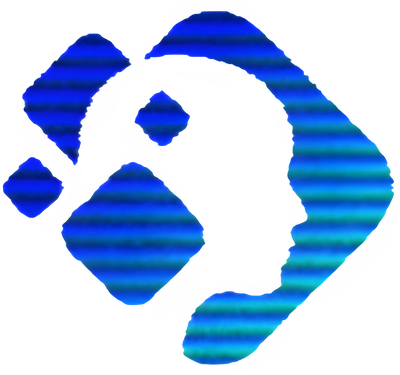
Congratulations! You did it. You aced the job interview and now you are one step closer to your dream job. The next step is to write a follow-up email.
A follow-up email is just as important as the interview itself. It is your chance to show the employer that you are still interested in the position and that you are the best candidate for the job.
Here are some tips on how to write a follow-up email:
1. Send a thank you email within 24 hours of the interview.
2. In the email, reiterate your interest in the position and why you would be the best candidate for the job.
3. If you have additional qualifications or experience that you didn’t get a chance to mention in the interview, include them in the email.
4. Include a call to action, such as asking for a meeting or a phone call, so that the employer knows you are still interested in the position.
5. Keep the email short and to the point.
By following these tips, you will be sure to write a great follow-up email that will help you get one step closer to your dream job!
Gather Your Recollection
After an interview, it’s important to take some time to gather your recollection. This will help you to prepare for any follow-up emails or letters.
First, take a few moments to yourself to really think about the interview. What questions were asked? How did you answer? What were the body language cues from the interviewer?
Then, start jotting down some notes. It doesn’t have to be anything fancy, just enough to remind you of what happened during the interview.
Once you have your notes, you can start preparing any follow-up materials. If you need to send a thank-you email, make sure to personalize it and mention something specific from the interview. If you’re writing a follow-up letter, again, try to include something specific that will jog the interviewer’s memory.
The main goal here is to make sure that you’re being remembered for the right reasons. By taking the time to gather your recollection, you’ll be able to put your best foot forward in any follow-up correspondence.
Use the Follow-Up Email Sample as a Guide
You’ve aced the job interview and now it’s time to seal the deal. The follow-up email is your last chance to impress potential employers before they make their final decision. Here’s a sample follow-up email to help you secure the job.
The follow-up email is often underrated. Many job seekers don’t bother sending one, thinking that their interview performance will speak for itself. But the follow-up email is your last chance to make a good impression on potential employers.
A well-written follow-up email can show employers that you’re organized, competent, and interested in the job. It’s also an opportunity to address any concerns that may have come up during the interview.
To write a strong follow-up email, start by reiterating your interest in the job and thanking the interviewer for their time. Then, include a brief overview of your qualifications and reiterate why you’d be a good fit for the position. Finally, conclude with a call to action, such as requesting another meeting or asking for a decision on the job.
Of course, every follow-up email will be different, depending on your situation. But this sample email can serve as a general guide.
“Subject Line: Thank You for the Job Interview
Hello [Interviewer Name],
Thank you for taking the time to meet with me yesterday. I appreciate the opportunity to learn more about the [Job Title] position at [Company Name].
Based on our discussion, I am confident that I have the skills and qualifications that would make me a successful member of the team. I am excited about the possibility of joining [Company Name] and contributing to your success.
Thank you again for your time and consideration. I look forward to hearing from you soon.
Sincerely,
[Your Name]”
Prioritize Key Takeaways
It’s no secret that the job search can be a daunting process. But there are certain things you can do to set yourself up for success. One of those things is to prioritize your key takeaways from each job interview.
After each job interview, take a few minutes to sit down and reflect on what went well and what didn’t go so well. Then, identify three key takeaways that you can focus on in your follow-up email.
The first key takeaway should be something that went well during the interview. This could be something you said or did that made a positive impression on the interviewer. For example, maybe you asked a question that really made them think. Or maybe you had a great answer to one of their questions.
The second key takeaway should be something that you need to improve upon for next time. This could be something like your body language or your delivery of certain answers. Maybe you came across as too nervous or perhaps you didn’t speak clearly enough.
The third key takeaway should be something specific to the company that you want to highlight in your follow-up email. This could be something you learned about their culture or their business model. Maybe you were really impressed with their work/life balance or their commitment to social responsibility.
By taking the time to prioritize your key takeaways from each job interview, you’ll be able to craft a more effective follow-up email that will help you stand out from the competition.
Summarize Impression and Action Items
It is important to take time after a job interview to summarize your impressions and action items. This will help you stay organized and focused as you move forward in the job search process.
First, take a few moments to jot down your thoughts on the interview. Note how you felt about the interviewer, the company, the position, and your own performance. This will give you a starting point for reflection.
Next, identify any action items that you need to take care of in the next few days. This might include sending a thank-you note to the interviewer, following up on a specific piece of information, or completing a task that was discussed during the interview.
Finally, make a plan for moving forward. This might involve applying for another job, scheduling another interview, or taking some time to review your job search strategy. By taking the time to summarize your impressions and action items, you will be able to keep your job search on track and make sure that you are taking the best next steps.
Thank the Interviewer
Thanking the interviewer is a great way to show your appreciation for their time, and it can also help you stay top-of-mind after the interview. A follow-up email is a great way to do this.
When should you send a follow-up email?
Ideally, you should send a follow-up email within 24 hours of your interview. This shows that you’re interested and excited about the opportunity, and it helps to keep you top-of-mind with the hiring manager.
What should you say in a follow-up email?
A brief, polite, and professional follow-up email should include:
A thank you for the interviewer’s time
A statement of interest in the position
A reiteration of your qualifications
A reference to something you discussed during the interview
A request for next steps
Example:
“Subject line: Thank you for meeting with me today
Hello [Interviewer’s Name],
Thank you for taking the time to meet with me today. I appreciate the opportunity to learn more about the [position] role at [Company]. Based on our conversation, I am confident that my skills and experience would be a valuable asset to your team.
I am enthusiastic about the possibility of joining [Company], and I look forward to hearing from you about next steps. Thank you again for your time.
Sincerely,
[Your Name]”
Express Interest in Working With You
If you’re like most job seekers, you’ve probably spent a lot of time searching for jobs that you’re interested in and submitting your resume. But what happens after you hit the submit button? In many cases, you never hear back from the employer.
It can be discouraging, but don’t give up hope! There are a few things you can do to increase your chances of hearing back from employers.
One of the best things you can do is follow up with the employer after you’ve submitted your resume. A follow up email shows that you’re still interested in the position and that you’re willing to go the extra mile to get it.
When you send a follow up email, be sure to keep it short and sweet. Mention that you recently applied for the job and that you’re eager to hear back from the employer. Thank them for their time and include your contact information so they can easily get in touch with you.
Sending a follow up email can be the difference between getting your foot in the door or getting lost in the shuffle. So don’t hesitate to reach out to employers after you’ve applied for a job. It just might be the key to landing your dream job!

